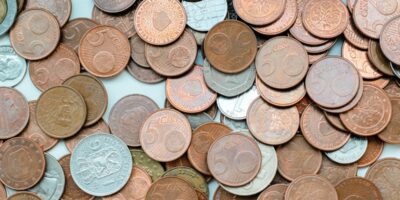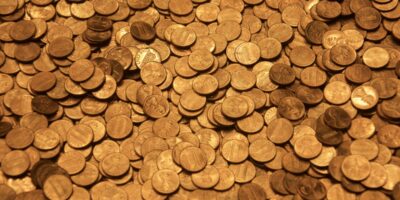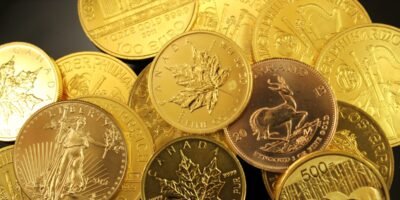The History of Dimes in the United States

The dime, valued at ten cents, has a storied history in the United States. Its origins date back to the Coinage Act of 1792, which established the U.S. Mint and the monetary system. The first dimes were minted in 1796, featuring the Draped Bust design.
Early dimes were minted in 89.24% silver and 10.76% copper, a practice that continued until the Coinage Act of 1965 when the U.S. switched to the current cupro-nickel clad composition. Notably, silver versions circulated until 1964 and are sought by collectors for their silver content.
Notable Design Changes and Rare Editions
Over the years, the dime experienced several design changes with notable contributions from renowned engravers. Among these, the Barber Dime, Winged Liberty Head (commonly called Mercury Dime), and the current Roosevelt Dime are significant.
- Barber Dime: Minted from 1892 to 1916, this design was crafted by Charles E. Barber.
- Mercury Dime: From 1916 to 1945, Adolph A. Weinman’s design featured Liberty in a winged cap, symbolizing freedom of thought.
- Roosevelt Dime: Introduced in 1946, John R. Sinnock designed this to honor President Franklin D. Roosevelt after his death.
Some editions of dimes are rare and valuable due to mint errors, limited mintages, or other unique factors. For instance, the 1894-S Barber Dime is an illustrious rarity, with only a few known specimens.
The Role of Dimes in the Economy and Society
Historically, dimes represented significant buying power. In the early 20th century, a dime could purchase a loaf of bread or a movie ticket. As inflation progressed, their purchasing power waned, but their role in coinage remained steady.
Dimes are now essential for transactions in vending machines, toll booths, and public transport. Their size and denomination make them versatile for various small-scale transactions. They are often used in education, teaching children the basics of money handling and saving.
Collecting Dimes: Numismatics Perspective
Dime collecting, or dime numismatics, attracts hobbyists and investors alike. Many enthusiasts pursue these coins for their artwork, historical significance, and potential for appreciation in value.
- American Numismatic Association (ANA): Offers resources and guides for collectors, including grading scales.
- Key Dates: Collectors often seek key dates like 1916-D Mercury Dime or the aforementioned 1894-S Barber Dime.
- Errors and Varieties: Unique misprints or variations can increase a dime’s value significantly.
Grading plays a vital role in coin valuation, assessing factors like strike quality, color, and luster. Numismatic enthusiasm also extends to rolls and bullion coins, especially those with silver content before 1965.
The Cultural Impact of Dimes
Dimes have made appearances in literature, art, and culture. The term dime store harkens back to when ten-cent shops rose as convenient retail locations. Musicians and writers often use dime metaphorically, associating it with affordability or nostalgia.
The March of Dimes exemplifies this coin’s societal contribution. Founded by President Roosevelt in 1938 as the National Foundation for Infantile Paralysis, it initially raised funds for polio research. Small donations accumulated to significant totals, illustrating the dime’s collective power.
Modern-Day Dime Production
Today, dimes are produced at several U.S. Mint locations, including Philadelphia, Denver, and San Francisco. The modern clad composition ensures durability and cost-effectiveness. Although devoid of precious metals, they remain a crucial element of circulating coinage in the economy.
Minting processes have advanced significantly. Techniques involve computerized engraving and high-speed presses capable of producing millions of dimes daily. Quality control measures ensure consistency and prevent errors that plagued earlier mintages.
Investing in Silver and Precious Dime Compositions
Investors regard pre-1965 silver dimes as part of junk silver portfolios. These coins, while not collectible grade, hold intrinsic value due to their metal content. They are often part of a diversified investment strategy protecting against inflation.
Collectible dimes, especially those with historical significance or rare errors, can offer significant returns. As with any investment, it is crucial to research thoroughly, understanding market trends and authenticating coins before purchase.
Technological Innovations and Dimes
The production process for dimes has incorporated technology to enhance efficiency and accuracy. Laser engraving provides intricate detailing, while automated inspection systems detect anomalies in coins with precision.
Moreover, digital platforms facilitate dime trading and collecting. Online marketplaces offer access to extensive collections, and apps assist collectors in cataloging and appraising their coins. Digitalization opens doors for new collectors to engage with numismatics conveniently.
Dimes in Philanthropy and Civic Initiatives
While known for monetary value, dimes play a role in philanthropic and civic endeavors. Initiatives encourage people to collect spare dimes for donations, proving that small amounts can yield significant change when aggregated.
School and community fundraisers frequently use dimes as visual cues to represent progress towards a funding goal. The simple act of saving these coins can contribute to collective efforts for social good.
Future of Dimes
The fundamental role of dimes in the economy appears secure despite a shift towards cashless transactions. Their storied history and cultural significance ensure continued interest. The challenge lies in balancing tradition with evolving consumer behaviors.
Proposals for redesigns occasionally arise, sparking debate among collectors and historians over preserving or modernizing designs. These discussions reflect broader conversations about currency’s role and representation in society.
From a numismatic perspective, the future may see enhanced connectivity through digital records and certifications, facilitating a global collector community. As technology progresses, the engagement with dimes and their stories will adapt to new formats without losing touch with their rich past.
Recommended Collecting Supplies
Coin Collection Book Holder Album – $9.99
312 pockets for coins of all sizes.
20x Magnifier Jewelry Loupe – $13.99
Essential tool for examining coins and stamps.
As an Amazon Associate, we earn from qualifying purchases.




Subscribe for Updates
Get the latest articles delivered to your inbox.
We respect your privacy. Unsubscribe anytime.